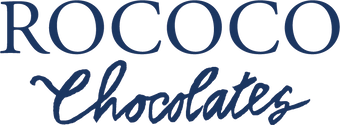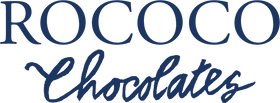Celebrating World Chocolate Day With 10 Fun Facts About Chocolate
At Rococo Chocolates we have 40 years of experience in bringing Pleasure and Provenance together.
We source the absolute best chocolate from around the world so you can indulge in the forbidden fruit free of guilt. And what better reason to celebrate chocolate than World Chocolate Day, which falls on July 7?
Our team of chocolate experts has put together a list of 10 fun facts for you to savour, maybe whilst nibbling on one of our Single Origin chocolate bars or a delicate Chocolate Wafer Thin.
1. Why is World Chocolate Day celebrated on July 7?
Although cocoa has been cultured in Mexico, Central and South America since as early as 1250 BC, Spanish conquistadores are credited with discovering (well, stealing), and bringing cocoa back to Spain in the early 1500s.
Columbus, Cortes, as well as Spanish missionaries, started regularly gifting cocoa and chocolate to Spanish royalty, and the start of the continental cocoa craze is commonly attributed to the fateful date of July 7, 1550.
From then on, it took Europe by storm, with London's first chocolate house opening in 1657, and hot chocolate being drunk in vast amounts by Marie-Antoinette and her courtesans.

2. Where does chocolate come from?
Chocolate comes from Central and South America, with heritage plants, like the Trinidario or Criollo varieties first started growing. Today, up to 70% of the World's cacao is grown in Africa, from heritage and modern (or hybrid) strains of the cacao tree.
In fact, cacao trees require a very specific kind of climate to thrive, which usually means it is only grown within 20 degrees north and south of the equator, where the temperatures are between 20-32 degrees and the trees benefit from rainfalls of up to 5 meters a year.
That being said, with a lot of patience and effort there has been some success in growing cacao this side of the Channel. The teams at the Royal Botanic Gardens at Kew and at the Chelsea Physics Garden were able to painstakingly grow a few pods over the past few years. The single pod grown at the CPG in 2017 was even turned into chocolate by our founder, Chantal Coady OBE.
Read more about the project here.

Photograph courtesy of Domori.
3. Chocolate is good for you!
Of course, in moderation. We've already talked about the many health benefits of chocolate, in one of our previous blog articles, but it is worth noting that most of these benefits are to be found in chocolate in as pure a form as possible.
To enjoy these health benefits and maximise your antioxidants and minerals intake, look for chocolate that has had the least manipulation possible. Think dark chocolate bars from traceable origins, or chocolate with at least 65% cocoa solids at a minimum.
Read more about the health benefits of chocolate here.

Photograph courtesy of Domori.
4. Chocolate contains caffeine.
It's true! A 100-gram bar of dark chocolate can contain up to 45mg (compared to over 200mg in a single shot of espresso) - and the darker the chocolate, the more caffeine it contains.
This caffeine, again, in moderation, is also what makes chocolate good for your heart, as it has been proven that people who consume caffeine regularly have less chance of developing cardiovascular diseases or diabetes.
5. Not all cocoa tastes the same.
In fact, much like wine, the taste of chocolate is heavily influence by its terroir. Although most of the chocolate sold around the world is made by blending varieties and countries of origin to obtain a consistent and, well, rather bland taste, premium chocolate focuses on the specific flavour profile of the cocoa used.
We use Domori's Single Origin Ivory Coast house blend across most of our range, and decline it in all shapes and forms by marrying it with suitable essential oils and other premium ingredients, such as candied fruits or nuts that titillate all senses.
Read more about Sourcing and Ingredients here.

Photograph courtesy of Domori.
6. The first chocolate bar was made in England!
J.S. Fry & Sons are credited with being the first chocolatiers to come up with a way to consume chocolate in solid form.
In 1847, they commercialised the first chocolate bar, made from sugar, chocolate liquor, and cocoa butter.
Since then, chocolate bars can be as extravagant (gold-covered chocolate anyone?) or as refined as one can imagine, but very little has changed when it comes to the main ingredients used.

7. There is a reason we use the finest Anglesey Sea Salt in our chocolate...
Salt is a flavour enhancer. If you have ever forgotten to salt your meal when cooking it, you know exactly what we mean. It brings out all the richness and depths of flavours and binds them together to make a recipe come alive.
In chocolate, salt helps cut through the bitterness of dark chocolate and deepens its natural flavour profile but it also helps cut through the sweetness of milk chocolate for a perfectly moreish mouthfeel.
We have been using Halen Môn sea salt from Anglesey, in Wales, for its intense and clean flavour, thanks to a perfect balance of minerals. It is hand-harvested and made with Anglesey sea water and nothing else.
8. Cocoa is a traded commodity.
Cocoa, much like grain, is a traded commodity and has been traded on the global markets since 1977.
As an agricultural product that requires very specific conditions and a wealth of experience to thrive, it is particularly exposed to inconsistent harvest.
Unfortunately, this means that there are a lot of intermediaries along the way, and the farmers who cultivate the cacao in the fields, often in war-torn or drought-affected countries, very rarely get paid a fair price for the fruit of their labour.
By using Domori chocolate sourced through Chocofair, we use chocolate purchased directly from a single cooperative in the Ivory Coast, where farmers are paid above market price for their cocoa.

Photograph courtesy of Domori.
9. You can't just microwave chocolate.
Although you may get away with it if you're making a simple chocolate cake, you may want to read our guide on How To Temper Chocolate At Home if you are planning on trying your hand at making truffles or chocolate lollipops.
We will let you read on to understand the chemistry behind chocolate tempering, but if you want glossy, shiny chocolate that makes that pleasing "snapping" sound when you break it, you will want to temper your chocolate.
Or join us at one of our Chocolate Making Experiences, where our tempering machine does the hard work for you.

10. Chocolate makes you happy.
But you already knew that!
What you may not know, is that the flavonoids present in chocolate (also present in wine or coffee), stimulate the brain in many ways.
They trigger the brain to release neurotransmitter chemicals, such as endorphins (the relaxing hormone), serotonin and dopamine (the happiness hormones), as well as oxytocin.
This in turn leaves you on a bit of a "chocolate high", which explains the warm fuzzy feeling you get after indulging in some delicious chocolate.



